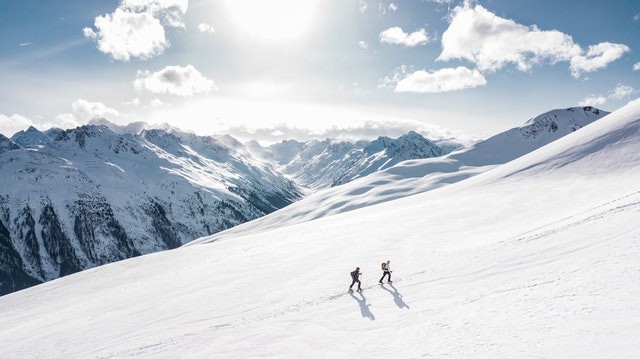Before the start of the DC Peaks 50, a 50-mile ultramarathon across Utah's harsh mountains on Saturday, Kelcey McClung Stowell was advised to expect rain and maybe a "small dusting of snow" in the higher altitudes.

However, Ms. Stowell claimed that about an hour into the race, the snow began to fall "really, really hard," and the wind began to howl at 30 or 40 miles per hour.
"It was getting terrifying as it grew colder and colder," she added. "We couldn't see the trail since the snow was getting so deep. My hood froze to my face as it rained down like hail."`
She began to be concerned "because it was freezing," she explained, and she was just wearing jeans, a shirt, and a jacket. She said that the other runners were wearing shorts.
"I started shivering," she explained, "but there was nothing we could do but go to the next aid station." "So we just continued traveling," says the narrator.
Rescuing the Ultramarathoners
On Saturday, Ms. Stowell of Ogden, Utah, was one of 87 ultramarathoners rescued in the Wasatch Mountain range north of Salt Lake City after being trapped in 12 to 18 inches of snow and "near whiteout conditions," according to the Davis County Sheriff's Office.
The event was called off, and search-and-rescue crews spent several hours covering the whole route on foot, as well as with four-wheel-drive vehicles and snowmobiles, to assist all of the runners in safety exiting the slopes, according to the Sheriff's Office.
Authorities claimed a few competitors were treated for hypothermia at the base of the mountains. In addition, a fall by one of the runners resulted in a slight injury. At the scene, all of the suspects were freed.
Call for Help
According to the Sheriff's Office, the initial plea for assistance came at 9:30 a.m. local time, and all of the runners had been found by 2:45 p.m. According to the office, the final rescuers departed the mountain range about 7 p.m. since they had to traverse "treacherous circumstances" on their way down.
In a statement, Davis County Sheriff Kelly V. Sparks stated, "Venturing onto the mountains, trails, and bodies of water at this time of year can be perilous since the weather changes fast." "Even a little rain in the valley may quickly turn into a snowstorm at higher elevations."
Trailing Route
According to the race's website, the DC Peaks 50 planned to take participants through a hilly route that primarily trailed and included some service roads and 2.5 miles of paved road. The website describes it as "a difficult route" with a vertical rise of 11,700 feet and a fall of 8,637 feet.
Jake Kilgore, one of the race directors, said he and the other director, Mick Garrison, worked on the course for two years, collaborating with the US Forest Service and others. Mr. Kilgore said 87 participants in the event and six aid stations along the route, each led by an experienced ultramarathoner.
He claimed the participants were around 8 miles into the race when the weather began to worsen.
Mr. Kilgore explained, "There was pouring at the starting line, and it had been expected rain." "No one had predicted that Francis Peak would get almost a foot of snow." Nobody."
Aware of the Risks
Like big-wave surfers or kite surfers, he added that ultramarathoners are conscious of the hazards inherent in the sport. However, runners had texted him after the event was canceled to say they were safe, and "they are all enthusiastic about coming back next year," he added.
Mr. Kilgore remarked, "The fact that we have every single racer accounted for implies that today's event was a highly successful race."
Ultrarunning, formerly considered an extreme fringe activity, has exploded in popularity in the last two decades. However, some critics claim that some of the events have blurred the lines between challenging and dangerous, changing the meaning of an endurance race from conquering vast distances to surviving the weather.
Freezing Conditions
Ms. Stowell claimed she was suffering from cold and was relieved to see a vehicle with the heating on full blast. Workers were throwing out hot soup and hot chocolate when she arrived at the base of the mountains, she claimed.
She didn't hold it against race organizers for allowing runners to compete in such harsh circumstances.
"On the contrary, I believe they were just fantastic," she stated, adding that she assisted in the evacuation of individuals.
After being pounded by the thick, chilly, sleet-like snow, Alex Michael of Clearfield, Utah, who was running the marathon with his daughter, 17, said he was more unhappy than afraid.
He explained, "We were only expected to get an inch or two of snow." "I don't think anyone was prepared for what happened at the top." That's what the Utah mountains are all about."
For more news update about Environmental News, don't forget to follow Nature World News!
© 2025 NatureWorldNews.com All rights reserved. Do not reproduce without permission.





